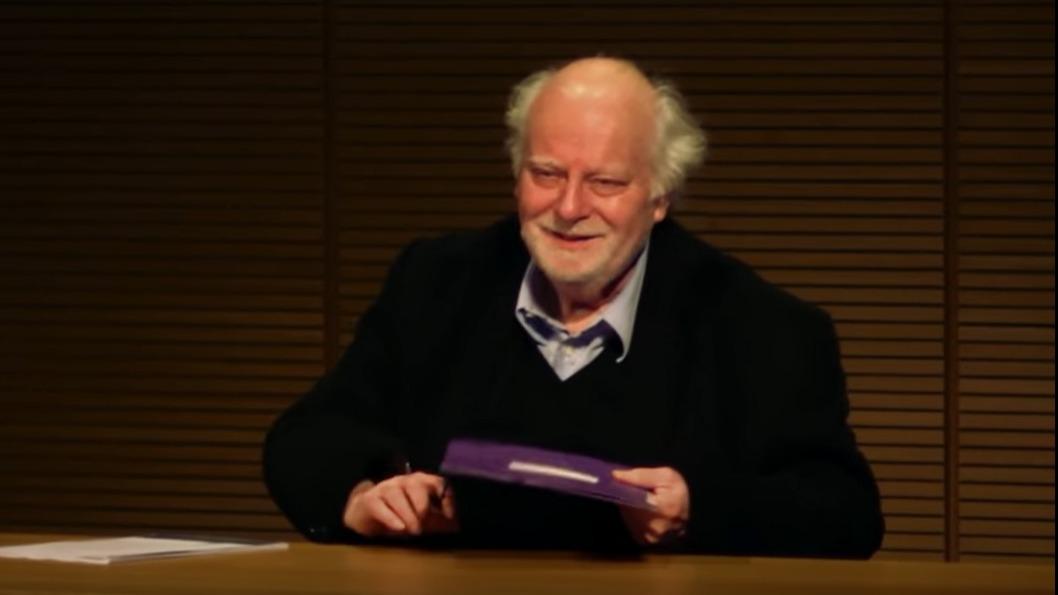Born in 1937 in Orléans, Jean-Marie Villégier died in the night at the age of 86 on the night of Monday to Tuesday, announced Tuesday the Opéra-Comique de Paris with which he had collaborated many times.
Theater and opera director, this lover of verse has always defended the 17th century repertoire.
He fell in love with boards at a very young age.
As a child, he saw
La Célestine
by Calixte and Mélibée and
Life is a Dream
, by Pedro Calderón de la Barca, edited by Charles Dullin.
At the age of 8, he learned verses from Horace by heart.
In fourth and third grade at the Buffon high school, he recited with a certain Laurent Terzieff the first scene of Molière's
Misanthrope
.
Villégier plays Alceste, his friend, Philinte.
They will also perform
Les Fourberies de Scapin
, he will be Silvestre and Terzieff, Scapin.
“Pass the aggregation first, you will do theater later
,” his parents advise him.
This son of an academic, who ended his career as inspector general of Spanish, did hypokhâgne and khâgne at the Louis-le-Grand high school,
“the penal colony!”
, then the École Normale Supérieure.
A professor of philosophy, during his studies, he met Bernard Dort.
Villégier was appointed, in the 1970s, to the International University Center for Dramatic Training and Research at the University of Nancy, then assistant in theater and cinema history.
He read all of Corneille's plays to supervise an acting course.
In 1985, Jean-Marie Villégier founded his own company, naming it L'Illustre Théâtre, like that of Molière.
He wants to introduce the author's theater.
At the same time, this music lover never stops listening to opera music.
He owned records of Mozart,
The Marriage of Figaro
, conducted by Erich Kleiber or
Don Giovanni
, by Joseph Krips.
He signed his first works with Marcel Bozonnet during an internship in 1969. The actor invited him to join
“a small team of friends”
who were rehearsing without a penny,
Léonce et Léna
by Büchner in 1969.
Heraclius, emperor of Orient
by Corneille in 1971. In total, Villégier has more than forty plays to his credit, including
Le Malade Imaginaire
, Molière's ultimate comedy-ballet, at the Théâtre du Châtelet in 1990,
L'amour Médecin
and
Le Sicilien or l'Amour painter
, often for the Comédie-Française.
Appointed administrator of the Français in 1983, Jean-Pierre Vincent asked him to produce
Cinna
by Corneille and
La Mort de Sénèque
by Tristan L'Hermite, which thus entered the repertoire of the house of Molière (1984).
Previously, Villegier directed student actors from the National Theater School of Strasbourg in
Sophonisbe
by Corneille and
Andromaque
by Racine.
Later, following the triumph of
Atys
, the opera by Lully and Quinault, he became the director of (TNS).
It was at the age of 46, in 1983, that Villégier approached opera for the first time, at the Monnaie in Brussels, then directed by the young Gerard Mortier.
This will be followed by
The Coronation of Poppea
, by Monteverdi, in Nancy, in 1985: a logical choice for a specialist in 17th century theater.
This is the time when we are rediscovering baroque opera with new ears thanks to the rise of new baroque orchestras, but the visual aspect is still lagging behind.
Aix has just resurrected
Hippolyte and Aricie
, by Rameau, under the flamboyant direction of Gardiner, but in the academic staging of Pier Luigi Pizzi.
Also, when the Italian Massimo Bogianckino, then director of the Paris Opera, to which the Opéra-Comique is still attached, decided to entrust William Christie with an opera by Lully for the tercentenary of his death in 1987. Christie refused Pizzi .
Thierry Fouquet, administrator of the Salle Favart, suggested Villégier, with whom he worked at the Opera ballet.
The result will be
Atys
- in collaboration with choreographer Francine Lancelot: one of those flagship shows of which we can say that there is a before and an after.
From that moment, the baroque wave became a groundswell.
No trace of archeology, however, in Villégier as an opera director.
He transposes the action into a salon at the time of Louis XIV, where the plasticity of the costumes and lighting creates a twilight atmosphere.
The duo will always prefer to speak of
"
postmodern rereading
", refuting the very idea of reconstruction:
"
a production which smacks of musicology in front of the public is a failed production
"
, Christie and Villégier liked to say.
Nice subversion, which gives the impression of classicism when it is a question of revisiting the codes with the hindsight of time.
Others will follow, from Rameau to Berlioz, without necessarily finding the state of grace of
Atys
, but always with taste and intelligence... After having toured the world, this totem production ended up finding the bosom of the Opéra-Comique in 2011, after having been completely reassembled for the occasion.

